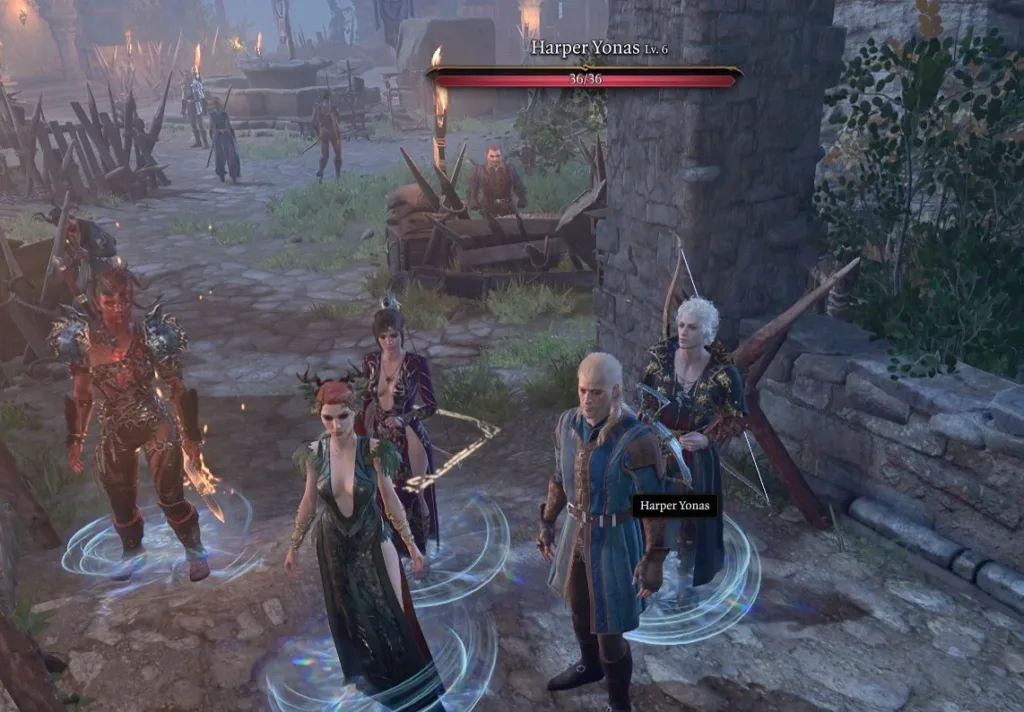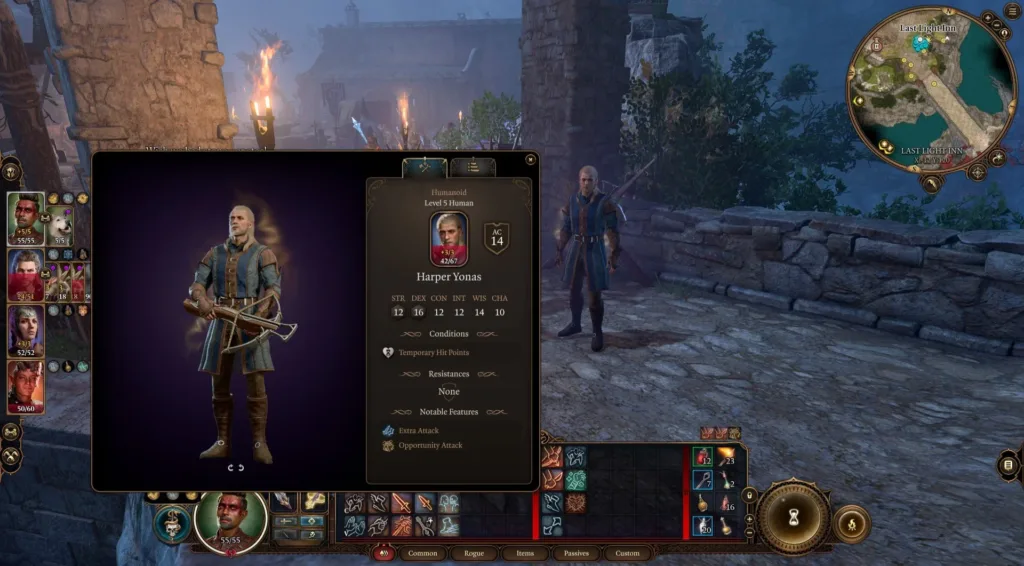Empower yourself with crucial life-saving techniques and become someone’s hero. Discover how prompt actions and basic knowledge can make a monumental difference in emergencies. In the unpredictable theater of life, emergencies can occur without warning. Knowing how to respond effectively can transform any bystander into a hero. This comprehensive guide arms you with life-saving knowledge, emphasizing the gravity of immediate action and preparedness.
In the first round, Harper Yonas was turned by Shadowheart. He took some radiant damage and gained the condition “turned”. I was afraid he would get hit, so I had Shadowheart cast sanctuary on him. The next round proceeded, and on Harper Yonas’ turn, he was still hostile and attacked one of the other Harpers. I then had Wyll cast polymorph on him, turning him into a hostile sheep.

This is where things got a little weird. All the shadows but one were down, with the last shadow gone invisible. Harper Karrow shot the Yonas Sheep with a ranged attack, killing the sheep and bringing back Harper Yonas. Then his second attack shot the shadow, At this point, I -think- that Yonas was cured because Karrow was no longer targetting him and Yonas attacked a shadow.
How to Save Someone’s Life in an Emergency?
Emergencies demand swift, confident action. Understanding fundamental life-saving techniques, such as CPR and basic first aid, equips you to stabilize the victim until professional help arrives. Immediate response, coupled with the right know-how, is often the thin line between life and death.
- Assess the Situation:
- Quickly evaluate the surroundings for any potential dangers to yourself, the victim, or others. Never rush into a scene where you might become a victim as well.
- Identify the cause of the emergency if possible (e.g., cardiac arrest, choking, bleeding, fire, etc.).
- Call for Professional Help:
- Dial the emergency services number immediately (like 911 in the U.S., 112 in the European Union, etc.). If you’re not alone, instruct someone specific to make the call.
- Provide the dispatcher with detailed information about the location, situation, and condition of the person in distress.
- Provide Immediate Care:
- If the person is unresponsive and not breathing, begin cardiopulmonary resuscitation (CPR) immediately. Here’s a simplified guide:
- Lay the person on their back on a firm surface.
- Kneel next to their neck and shoulders.
- Perform 30 chest compressions at the rate of 100-120 per minute, allowing the chest to rise completely between compressions.
- Give two rescue breaths by tilting the head back, lifting the chin, pinching the nose shut, and breathing into the mouth.
- Continue the cycles of chest compressions and breaths until help arrives or the person shows signs of life.
- If trained and an automated external defibrillator (AED) is available, follow the device’s instructions to use it.
- If the person is unresponsive and not breathing, begin cardiopulmonary resuscitation (CPR) immediately. Here’s a simplified guide:

What Should I Do if I Witness a Medical Emergency?
- Assess the Scene: Ensure it’s safe for you to approach. Never put yourself in harm’s way.
- Call for Help: Dial emergency services immediately, providing clear, concise information.
- Provide Aid: Utilize your first aid knowledge, administering care like CPR if necessary.
- Stay Calm: Keep the victim reassured while efficiently organizing other bystanders until help arrives.
Steps to Perform CPR Correctly
Performing CPR involves:
- Positioning: Lay the person flat on their back on a firm surface.
- Chest Compressions: Place your hands one atop the other, in the middle of the chest. Press down firmly and smoothly, 30 times.
- Rescue Breaths: Pinch the nose shut, cover the mouth with yours creating a complete seal, and breathe into the person’s mouth twice.
- Repeat: Continue the cycle until emergency services intervene.
Is It Legal to Perform CPR on a Stranger?
Most regions have “Good Samaritan” laws designed to protect from liability those who offer aid in emergency situations. These laws are predicated on the notion that assistance is rendered in good faith, abiding by standard practices.

What Are the Signs of Cardiac Arrest?
Recognizing cardiac arrest is paramount. Signs include sudden loss of responsiveness, absence of normal breathing, and loss of pulse. Immediate CPR is vital in this critical juncture.
Cardiac arrest is a serious medical emergency that requires immediate intervention. Recognizing the signs of cardiac arrest is crucial because every second counts in improving the survival chances of the affected individual. Here are the typical signs:
- Sudden Loss of Responsiveness:
- The person does not respond, even if you tap them hard on the shoulders or attempt to rouse them verbally.
- They may collapse suddenly and won’t react to any stimuli.
- Absence of Normal Breathing:
- After the person collapses, they may stop breathing or only gasp for air (agonal breathing). This kind of breathing is ineffective and is a sign of cardiac arrest.
- No Pulse or Heartbeat:
- The individual will not have a normal pulse because their heart is not effectively pumping blood.
- Loss of Color:
- Due to the lack of circulation, their skin may become pale or blue-tinged, especially around the face, lips, and nails.
- Possible Seizure-like Episodes or Convulsions:
- In some cases, the person may experience seizures or convulsive, jerking movements.
How to Help a Drowning Person?
Rescuing a drowning individual involves securing one’s own safety first, extending a tool or object to pull them to safety, or providing flotation until rescue services arrive. Knowledge of water rescue techniques is advantageous.
First Aid Techniques for Different Emergencies
Different crises demand specific first-aid responses. From Heimlich maneuver for choking to applying pressure on wounds, or creating splints for injuries, appropriate methods vary significantly based on the situation.

Training Courses for Basic Life Support
Engaging in professional training for basic life support is an invaluable investment. These certifications teach nuanced aspects of emergency response and are often provided by health organizations or community centers.
- Gujarat Police Logo - January 25, 2024
- CSC Logo - January 25, 2024
- Lata Shabd Roop - January 25, 2024
